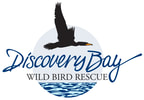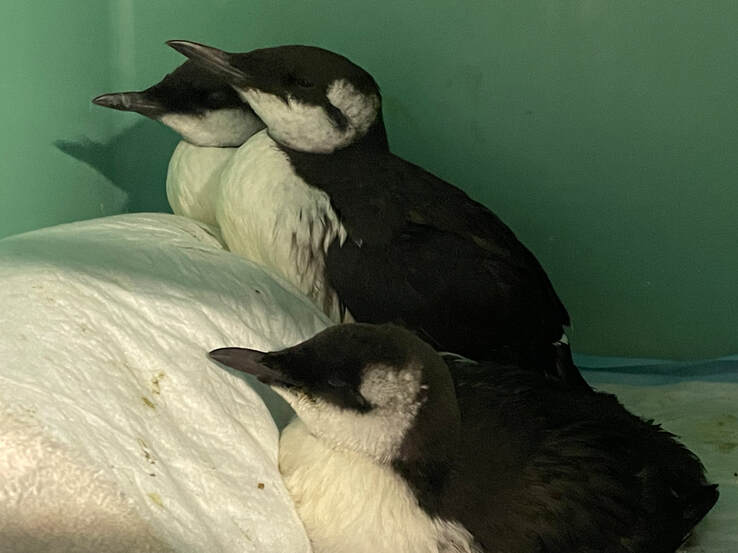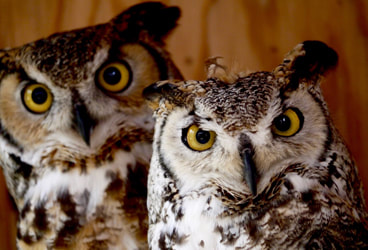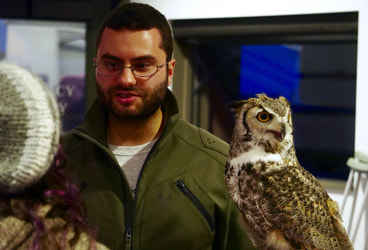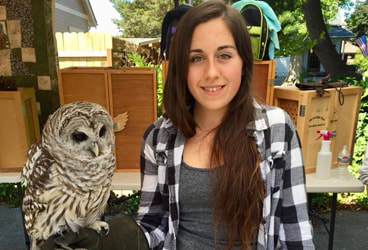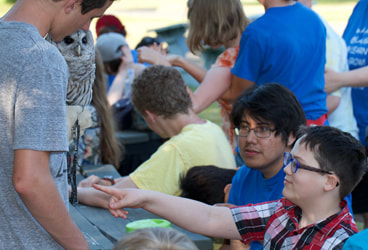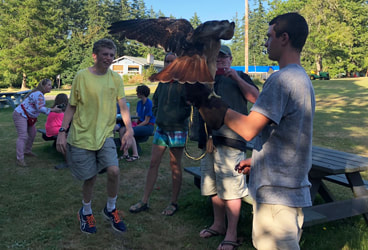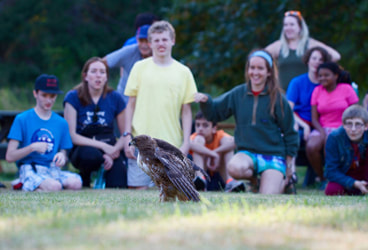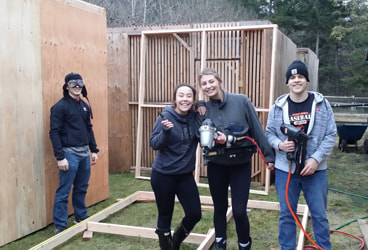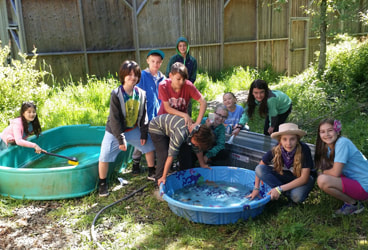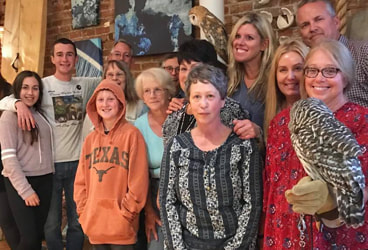9/15/23 News--These common murres and other seabirds are coming in to rehab from the coast of Washington due to starvation. They are all young birds who are finding it difficult to get enough fish to eat as the fish are going deeper to find colder water. This is causing starving seabirds to come out of the water onto the sand or are struggling in the surf. This is not avian influenza and these birds can be helped. Please, if you see one, throw a jacket or cloth over them and get them to safety. Call a rehab center near you so they can get transferred to people who know how to care for them. They all need specialized diets and enrichment to get healthy again for release.
Education, Outreach & Public Presentations
A number of our birds sustained injuries that were too severe for them to ever be released back to the wild. A few of our birds were human imprints and never learned how to be a wild bird. These birds have a permanent and loving home at DBWBR, and many of them work as Ambassadors for wild birds. They come with us to public outreach and educational events and help us teach people about these amazing birds and how important it is for us, as humans, to protect them and our their habitats.
Outreach Event – If your group or organization is interested in having us bring some of our birds to you, please contact us. We bring a variety of raptors such as owls, hawks and falcons. The minimum charge for an outreach event is $250 within Jefferson County (outside our local area we will charge additional for travel - depending upon distance).
Group Tours of DBWBR – We are limited in having any public tour events at our location at this time.
As it costs a lot of money to rescue, rehabilitate, feed and care for our birds, we cannot do outreach programs for free. After meeting our wonderful birds, you may decide to continue to help us by Adopting a Bird! or you can also mail a donation with a check, please click here for Donation Form.
|
Meet buddies Dillon and Gandalf. These two bachelors are Great Horned Owls currently in our education programs. They can come to your school, or you can choose to adopt one, or the other, or both! They have been friends for the past 13 years and live together in a flight enclosure at DBWBR. Note that they are very light in color for this type of owl, that is because they both come from the desert southwest!
|
This is Gandalf with Monte, one of our dedicated volunteers, at an educational/outreach program. Part of our mission is to engage, inspire and educate the community about birds and issues that effect our wild friends. We are available for outreach educational presentations at your venue or event. Please contact us for more information!
|
Lauren, one of our rehabilitation and education volunteers and the wonderful host of our latest videos, is holding a young Barred Owl at Kid’s Day at the Poulsbo Farmer’s Market. When we bring birds to events, we always bring spray bottles of water (you can see them in the background) to mist the birds if they start getting hot. They actually enjoy the cool spray of water!
|
|
The campers at Camp Beausite really look forward to their visits from Discovery Bay Wild Bird Rescue. They love to ask questions and interact with the birds and handlers.
|
This is Ruby, our educational Red-Tailed Hawk ambassador, with Joseph at Camp Beausite. We visit them each year, every week in July. Camp Beausite is a summer camp for adults and children with special needs.
|
We were fortunate to be able to release a rescued Red-Tailed Hawk to the sheer delight of the campers at Camp Beausite. Every summer throughout the month of July, the birds from DBWBR visit the campers and help teach them about these amazing animals that share our world.
|
|
North Kitsap High School students doing their community service at DBWBR by helping us to build Mews (outdoor flight enclosures for our birds).
|
These are wonderful OPEPO elementary students from Port Townsend who came out to volunteer and do community service for the day! We do offer field trips to our facility, which is a great way to learn more about what we do and the birds who live all around us.
|
Our fantastic team of volunteers gather for a picture at Conservatory Coastal Home in Port Townsend after they graciously hosted DBWBR for a fundraising event. Events like this bring in much needed money which helps us continue to rescue wild birds. If your organization would like to host a fundraiser, please contact us.
|
